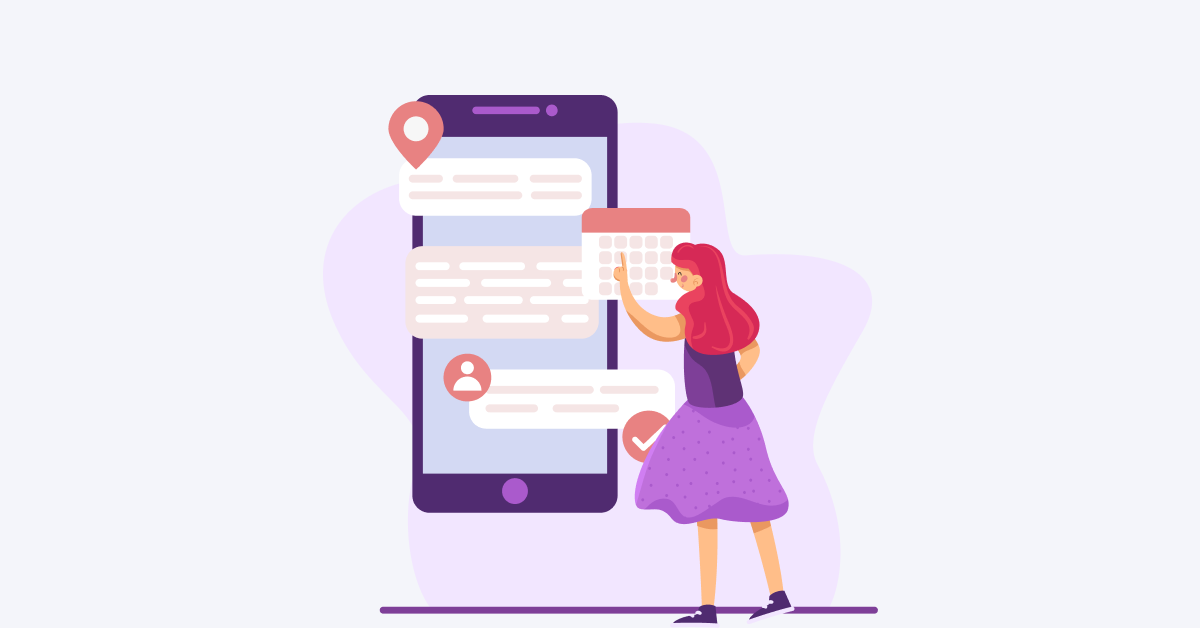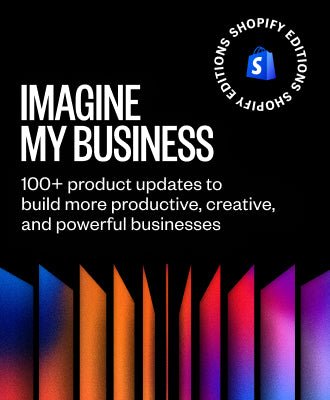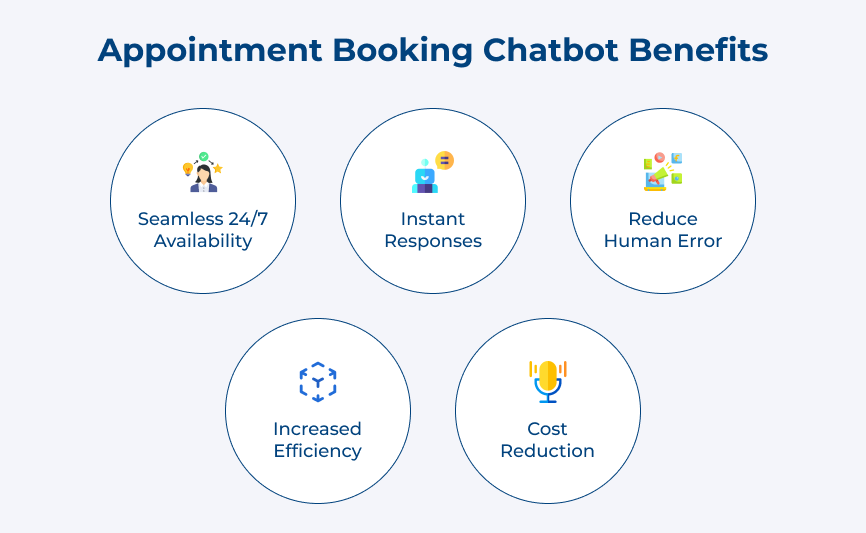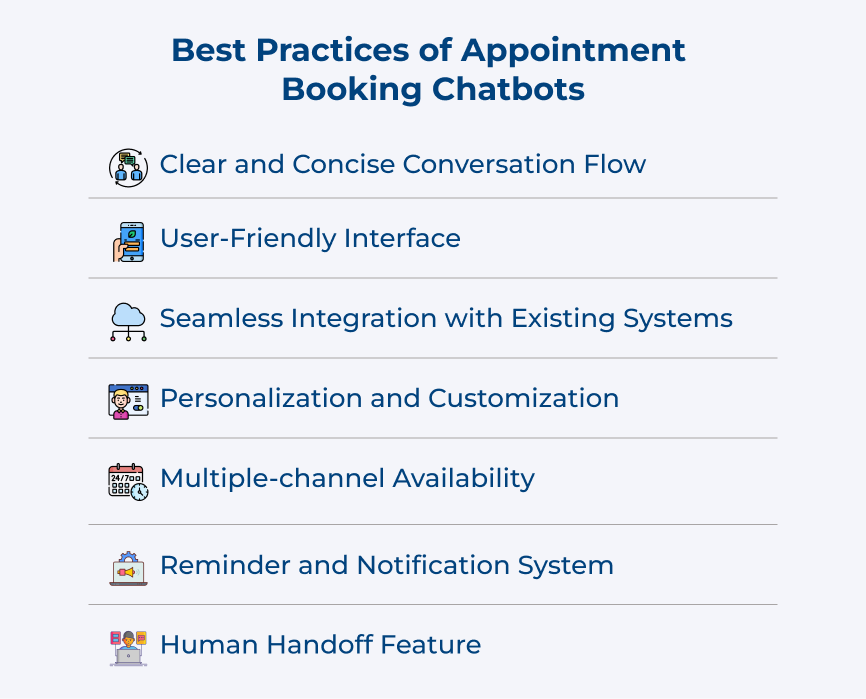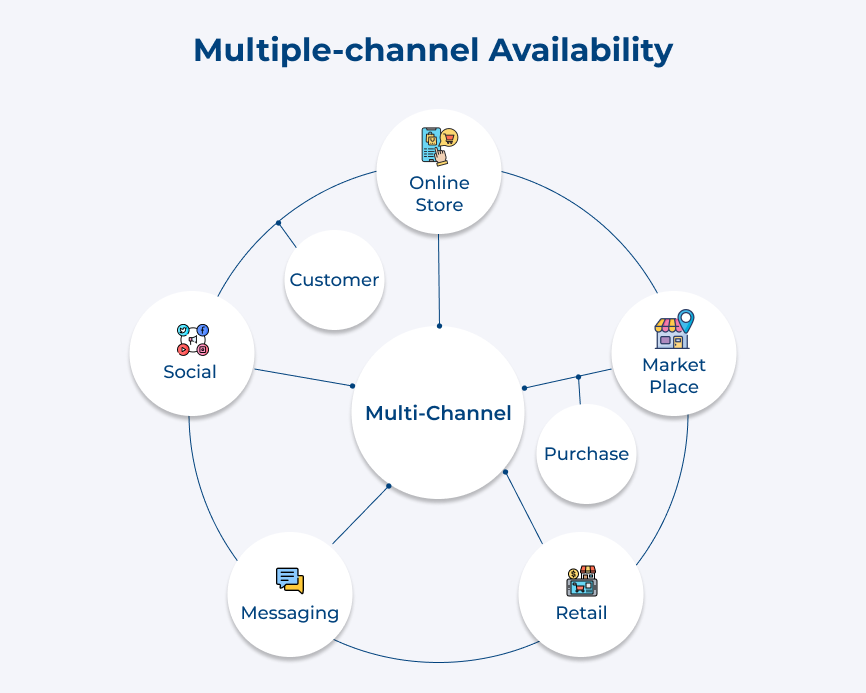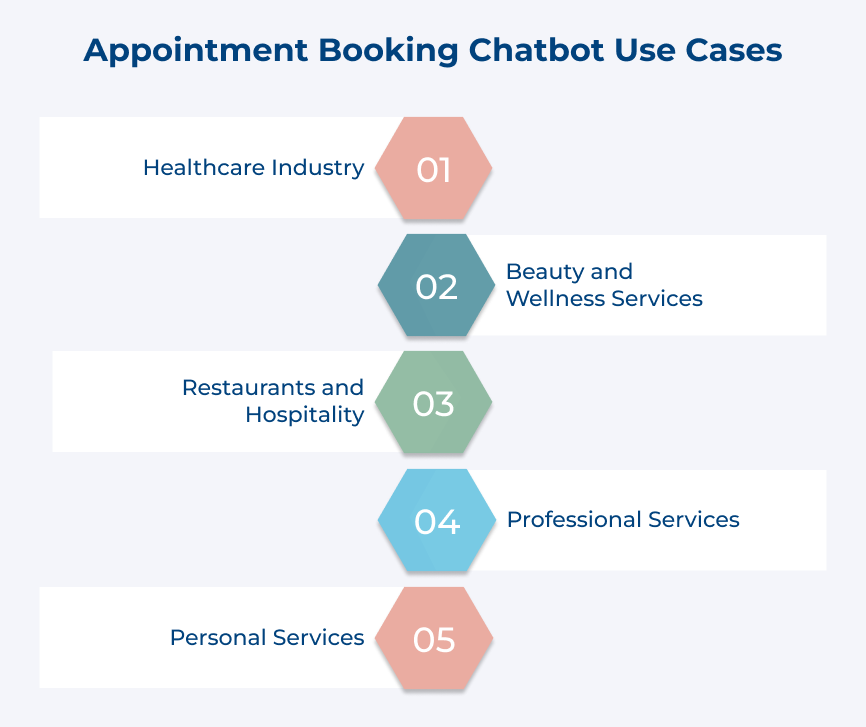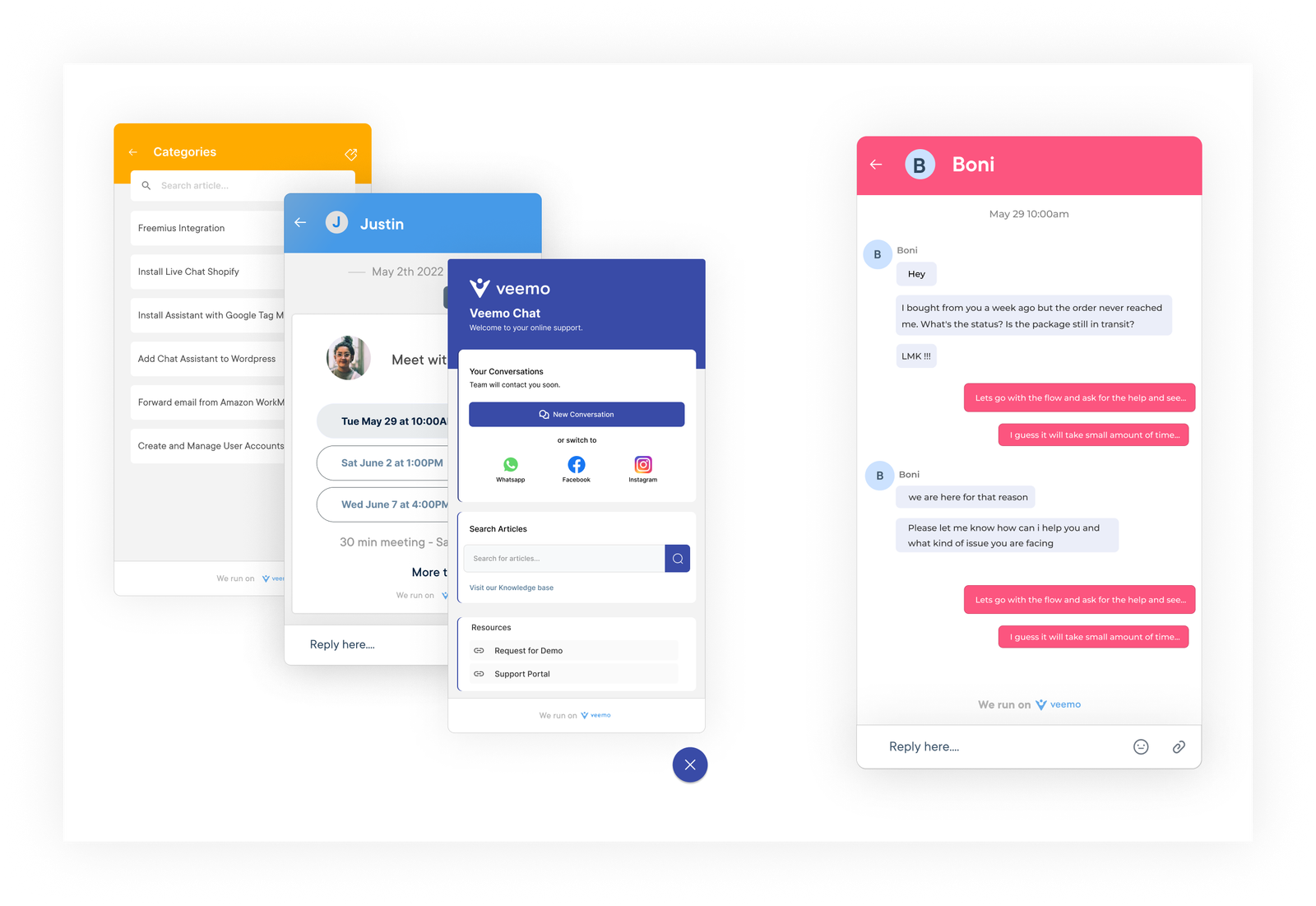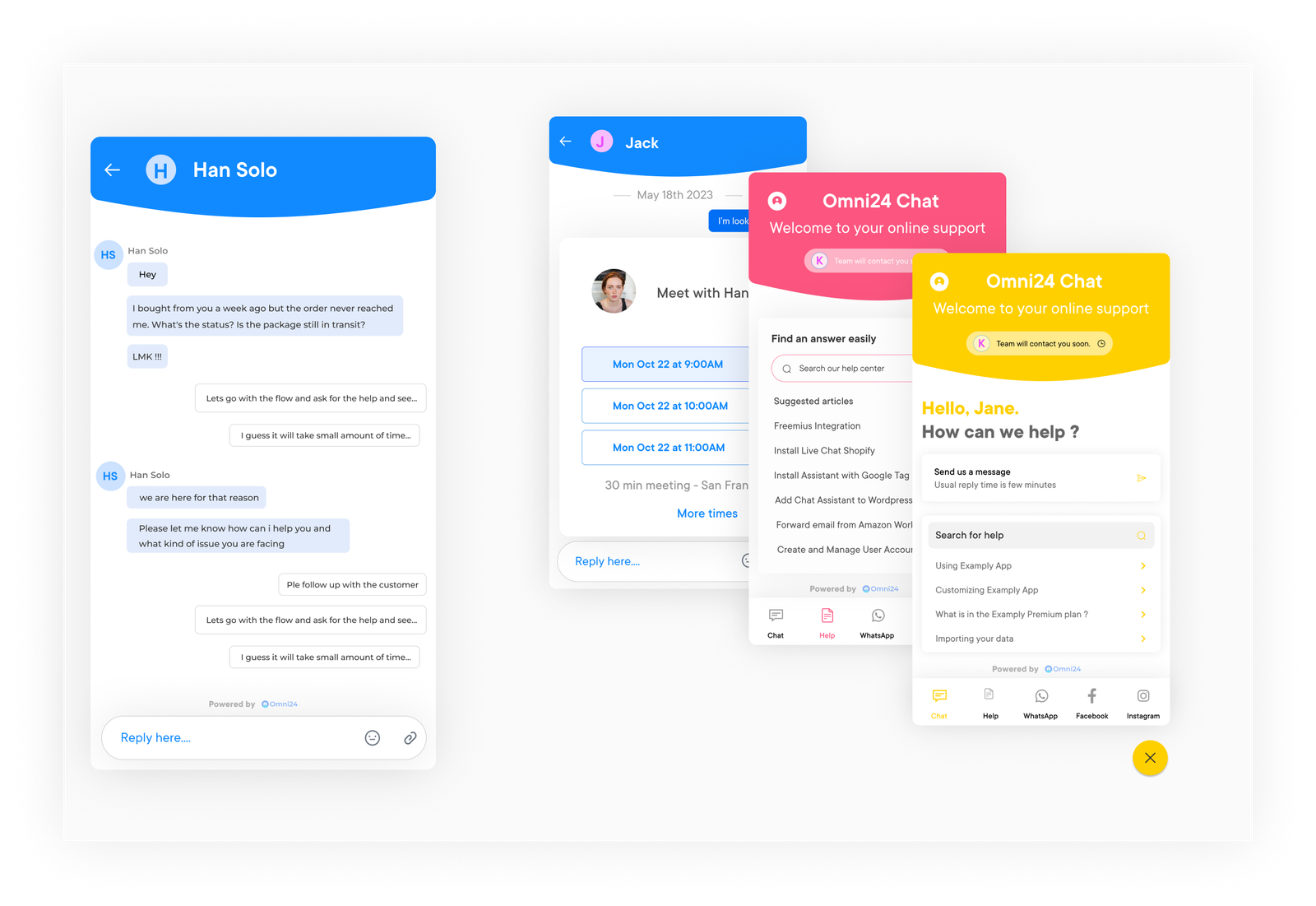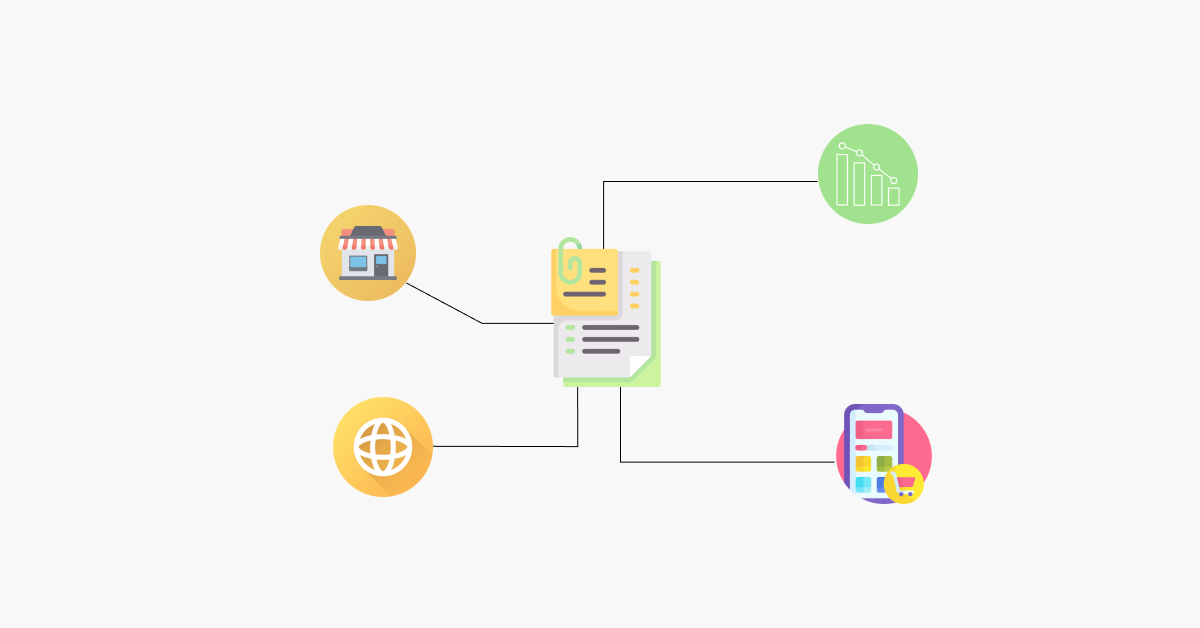1. Clear and Concise Conversation Flow
A clear and concise conversation flow is one of the best practices when it comes to appointment booking chatbots. It refers to the seamless communication between the chatbot and the user, ensuring that the conversation flows smoothly. When users interact with a chatbot, they expect a straightforward conversation that quickly helps them accomplish their goals.
If the chatbot’s responses are convoluted, ambiguous, or filled with unnecessary information, it can lead to confusion. An example of implementing the best practice is by using natural language processing (NLP) technology. NLP allows chatbots to understand and respond to human language in a more human-like way, making the conversation feel more intuitive.
Ways to implement:
- Use short and direct messages: Keep the chatbot’s responses concise and to the point. Avoid long paragraphs or excessive information that may overwhelm the user.
- Provide clear instructions: Guide the user through the booking process, providing step-by-step instructions and options.
- Offer menu options: Present the user with predefined options or a menu that they can easily select from.
2. User-Friendly Interface
A user-friendly interface is considered one of the crucial strategies in creating appointment booking chatbots. A complicated or confusing interface can frustrate users and deter them from using the chatbot altogether, resulting in lost opportunities. Prioritizing a user-friendly interface allows businesses to improve the efficiency of their appointment booking process, leading to increased customer engagement and revenue generation.
An excellent example of a user-friendly interface in such chatbots is the use of clear and concise instructions. Businesses can minimize confusion and ensure a smooth user experience by providing straightforward prompts. Incorporating visual cues such as buttons or icons, can make it easier for users to navigate through different options and make selections.
Ways to implement:
- Create logical conversational flows: Map out the conversation flow in a logical manner that mirrors the typical appointment booking process. It helps users understand what information is required and makes the process more intuitive.
- Use a conversational tone: Design the chatbot to have a friendly and conversational tone, mimicking a conversation with a real human. It makes the interaction more engaging and relatable for users.
- Provide assistance and error handling: Anticipate user questions or mistakes and offer assistance in response. Clear error messages and prompts can help provide relevant information to proceed.
3. Seamless Integration with Existing Systems
Seamless integration involves ensuring that the chatbot seamlessly integrates with the existing systems and processes of the business or organization. The appointment booking chatbot can provide a unified experience for both customers and staff by seamlessly integrating with existing systems. It eliminates the need for manual data entry or duplicate work, saving time and reducing errors.
Let’s consider a healthcare provider’s appointment booking chatbot. Patients can easily book appointments based on real-time availability by integrating the chatbot with the provider’s electronic medical records (EMR) system and scheduling software. The chatbot can also retrieve patient information from the EMR system, allowing for personalized interactions and tailored recommendations.
Ways to implement:
- API Integration: Utilize application programming interfaces (APIs) to connect the chatbot with relevant systems.
- Webhooks: Implement webhooks to trigger events or actions in other systems when specific conditions are met in the chatbot. It ensures that relevant information is updated in real time.
- Single Sign-On (SSO): Implement SSO functionality to provide a seamless login experience for both customers and staff. It eliminates the need for multiple logins and enhances security.
4. Personalization and Customization
Businesses can provide a more personalized interaction, eventually leading to higher customer satisfaction and conversion rates. It not only increases the likelihood of successful appointment bookings but also promotes customer loyalty and repeat business.
A healthcare facility can implement customization in their appointment booking chatbot by collecting relevant information such as the patient’s medical history, and preferred doctor or appointment preferences. The chatbot can suggest available appointments that best fit the patient’s needs and even provide personalized reminders for upcoming appointments.
Ways to implement:
- Collect user preferences: Ask users for their preferences during the conversation, such as preferred time slots, location, and service requirements.
- Utilize previous interaction data: Use data from past interactions to understand user preferences and behavior patterns. It can help in recommending tailored appointment options and offering personalized suggestions.
- Tailor recommendations: Based on the collected user information and previous interactions businesses can deliver customized recommendations.
5. Multiple-channel Availability
Multiple-channel availability involves providing the option for users to book appointments through various communication channels such as websites, social media platforms and messaging apps. The approach recognizes that users have different preferences when it comes to communication and offering multiple channels accommodates their diverse needs.
